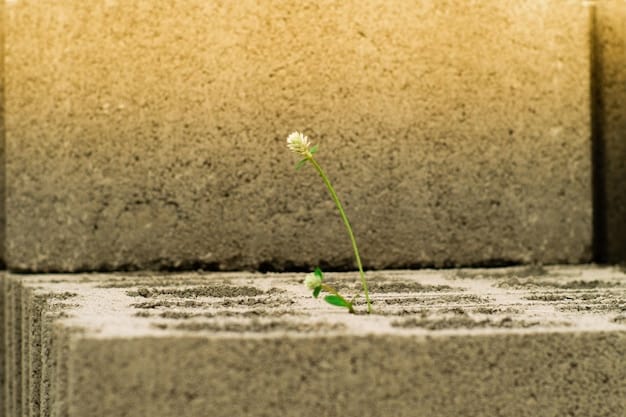Cultivating Resilience: 4 Strategies for Bouncing Back Stronger

Cultivating resilience involves adopting strategies to effectively navigate and recover from setbacks, fostering mental and emotional strength to emerge stronger than before.
Life is full of challenges, and learning how to navigate them effectively is crucial. Cultivating resilience is the key to not just surviving setbacks, but thriving in spite of them.
Understanding Resilience: More Than Just Bouncing Back
Resilience is often described as the ability to bounce back from adversity. However, it is more than just recovering; it’s about adapting, growing, and becoming stronger through challenging experiences.
Resilience isn’t an innate trait that some people possess and others don’t. It’s a skill that can be developed and honed over time. By understanding the core components of resilience, we can actively work on building our capacity to withstand and overcome life’s inevitable hurdles.
The Core Components of Resilience
Several key factors contribute to a resilient mindset. Understanding these aspects can help you build a stronger foundation for handling adversity.
- Self-Awareness: Recognizing your emotions and reactions is the first step in managing them effectively.
- Positive Relationships: Strong social connections offer support and perspective during difficult times.
- Acceptance: Acknowledging and accepting reality allows you to focus on what you can control.
- Proactive Approach: Taking action to address problems rather than avoiding them builds confidence and a sense of control.
Resilience is not about avoiding stress or hardships; it’s about developing the skills to navigate them effectively. By focusing on these core components, individuals can enhance their ability to face challenges with greater confidence and strength.

Strategy 1: Building a Strong Support System
One of the most effective strategies for cultivating resilience is to build a strong support system. Having people in your life who you can rely on for emotional support, advice, and practical help can make a significant difference when facing challenges.
A strong support system provides a buffer against stress and adversity. It gives you a safe space to share your feelings, gain perspective, and receive encouragement when you need it most. Building and maintaining these relationships is an investment in your overall well-being.
Nurturing Meaningful Connections
Building a strong support system isn’t just about having a large network of acquaintances. It’s about cultivating deep, meaningful connections with people who genuinely care about your well-being.
- Invest Time and Effort: Nurturing relationships requires time and effort. Make an active effort to connect with the people in your life.
- Be a Good Listener: Show genuine interest in what others have to say. Offer your support and understanding.
- Offer Help When Needed: Reciprocity is essential in any relationship. Be willing to offer help and support to others when they need it.
A strong support system isn’t just about receiving help; it’s also about giving. By supporting others, you strengthen your own resilience and create a circle of mutual support.
Strategy 2: Practicing Mindfulness and Self-Care
Taking care of your mental and physical well-being is crucial for building resilience. Practicing mindfulness and self-care can help you manage stress, regulate your emotions, and maintain a positive outlook, even during difficult times.
Mindfulness involves paying attention to the present moment without judgment. Self-care encompasses activities that promote your physical, emotional, and mental health. Integrating these practices into your daily routine can significantly enhance your resilience.
Incorporating Mindfulness Into Daily Life
Mindfulness doesn’t require hours of meditation. Simple practices can be incorporated into your daily routine to promote a sense of calm and focus.
- Mindful Breathing: Take a few moments each day to focus on your breath. Notice the sensation of the air entering and leaving your body.
- Body Scan: Pay attention to the sensations in your body. Notice any areas of tension or discomfort and try to release them.
- Mindful Walking: Focus on the sensation of your feet making contact with the ground as you walk. Notice the sights, sounds, and smells around you.
Mindfulness is about training your attention to be present in the moment. By practicing regularly, you can cultivate a calmer, more centered state of mind, which will help you navigate stressful situations with greater ease.
Strategy 3: Developing a Growth Mindset
Adopting a growth mindset is a powerful strategy for cultivating resilience. A growth mindset is the belief that your abilities and intelligence can be developed through dedication and hard work.
Individuals with a growth mindset view challenges as opportunities for learning and growth, rather than as threats to their self-worth. This perspective allows them to persevere through setbacks, learn from their mistakes, and ultimately achieve greater success.
Embracing Challenges and Learning from Setbacks
To develop a growth mindset, it’s essential to embrace challenges and view setbacks as learning opportunities.
- Reframe Your Thoughts: When faced with a challenge, focus on what you can learn from the experience rather than dwelling on your limitations.
- Embrace Failure: View failure as a stepping stone to success. Analyze your mistakes and use them as a guide for future endeavors.
- Persistence: Don’t give up easily. Keep working towards your goals, even when faced with obstacles.
Developing a growth mindset is about shifting your perspective from fixed to flexible. It empowers you to believe in your potential and to keep striving for improvement, regardless of the challenges you face.

Strategy 4: Setting Realistic Goals and Taking Action
Setting realistic goals and taking action towards achieving them can significantly boost your resilience. Having a clear sense of purpose and direction can help you stay motivated and focused, even when facing adversity.
Setting achievable goals provides a sense of accomplishment and progress. Breaking down larger goals into smaller, manageable steps makes them less daunting and more likely to be achieved. Taking consistent action builds momentum and reinforces your belief in your ability to succeed.
The Power of Small Steps
When facing a major challenge, focus on taking small, manageable steps forward. These small victories can build momentum and boost your confidence.
- Define Your Goals: Clearly define what you want to achieve. Make your goals specific, measurable, achievable, relevant, and time-bound (SMART).
- Break Down Goals: Divide larger goals into smaller, more manageable tasks.
- Celebrate Progress: Acknowledge and celebrate your accomplishments along the way. This will keep you motivated and reinforce your progress.
Setting realistic goals and taking consistent action is about creating a sense of control and purpose in your life. It empowers you to move forward, even when facing obstacles, and to build a sense of accomplishment and resilience along the way.
| Key Element | Brief Description |
|---|---|
| 🤝 Support System | Rely on friends and family for emotional support. |
| 🧘 Mindfulness | Practice being present to reduce stress. |
| 🌱 Growth Mindset | See challenges as learning opportunities. |
| 🎯 Realistic Goals | Set achievable targets to gain momentum. |
Frequently Asked Questions
▼
Resilience is more than just bouncing back; it’s the ability to grow and adapt in the face of adversity, developing mental and emotional strength to navigate life’s challenges effectively.
▼
Nurture meaningful connections by investing time, actively listening, and offering help. Quality over quantity—focus on relationships that genuinely support your well-being.
▼
Try mindful breathing exercises, body scans, or mindful walking. These practices help center your attention and promote a calmer state of mind, reducing daily stress.
▼
A growth mindset allows you to see challenges as opportunities for learning and personal development, fostering perseverance and helping you bounce back stronger from setbacks.
▼
Setting and achieving realistic goals fosters a sense of accomplishment, providing you with the needed motivation and momentum to take on even the most daunting challenges in life.
Conclusion
Cultivating resilience is a lifelong journey that requires consistent effort and self-reflection. By building a strong support system, practicing mindfulness, developing a growth mindset, and setting realistic goals, you can enhance your ability to navigate setbacks and emerge stronger than ever. Remember to be patient with yourself and celebrate your progress along the way. Resilience is not about avoiding challenges, but about developing the skills to thrive in spite of them.





